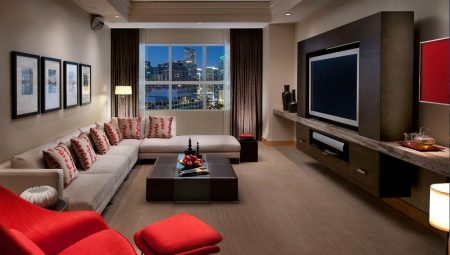Who does not dream of a comfortable spacious living room, where it is so nice to get together as a family or relax after a hard day? But not everyone can create a unique style in their own apartment. And the point is often not even the financial component. It's just that many are used to acting stereotyped. If the living room, then you need a sofa, TV, and on the wall some wallpaper. This approach will never lead to the desired result.
Let's figure out how to create an author’s project that will delight the eye and impress guests with its originality.

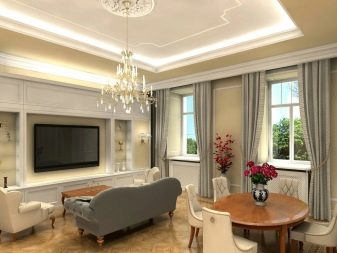
Features of the layout and interior of the living room
Creating a living room interior is a fascinating and largely creative process.
There are a number of features that should be considered before starting repairs.
- Quadrature. The amount of furniture and its dimensions should be proportional to the room itself.
- Room Features. If the living room has a balcony or it has several large windows, then this should be taken into account. This can affect both the amount of furniture and the scenario of its arrangement.
- All family members should be comfortable. This applies to the number of seats on the sofa and at the dining table. If family members have hobbies that require the placement of additional items, this is also worth considering.
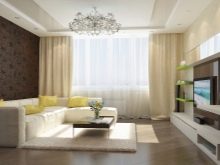
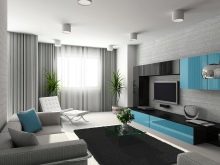
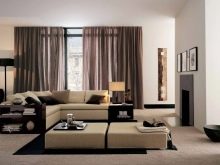
How to simply and tastefully design a room?
Before running to the store and buying decoration materials, appliances and furniture for your living room, stop and think about what the room should be.Many approach the choice randomly. For example, the action template may be as follows: I like this upholstered furniture, I’ll pick up some light wallpapers for it, the TV will stand on a pedestal, and I don’t need anything else in the room.
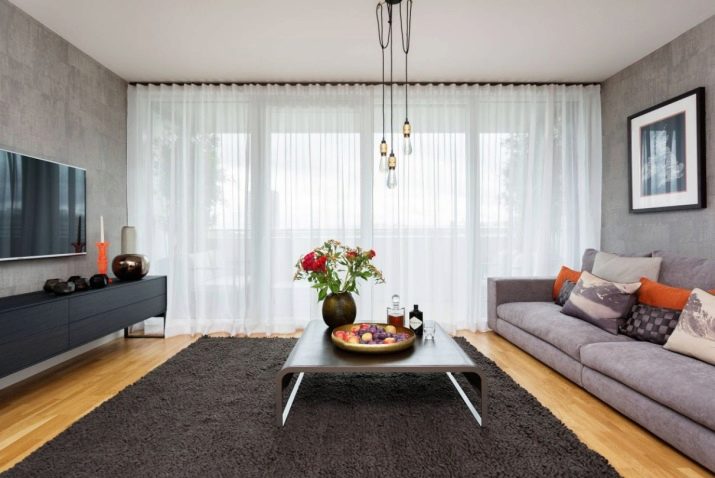
But if you approach the issue seriously, you will understand how irrational it is. You will spend money, time, effort, and the result will be very mediocre. That is why any project should begin with careful planning.
The more detailed you think it over, the easier it will be for you to follow a given course.
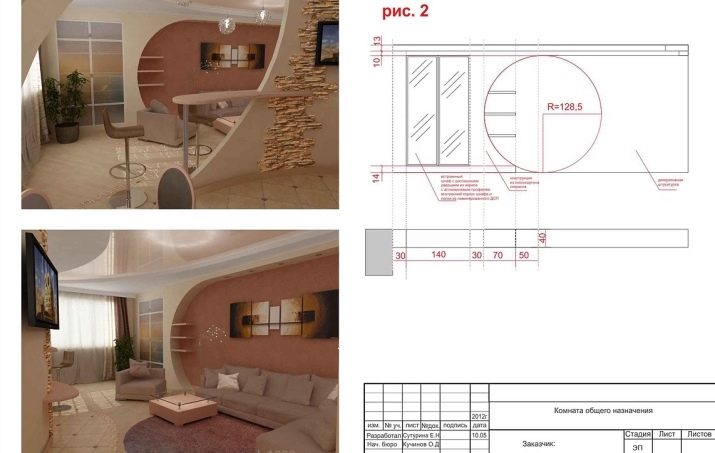
We define zones
Despite the fact that the living room is a single unit, it is necessary to highlight several zones in it. Such a visual division of space will help not only to arrange all the furniture logically, but also make the interior concise. Experts say that competent zoning makes the space bigger, while the chaotic arrangement of furniture along the walls gives the impression of an unfinished and spineless interior.
For a country house, it is advisable to allocate a recreation area, especially if a fireplace is assumed. You will also need a dining area and a place where you can comfortably watch your favorite movie with the whole family.
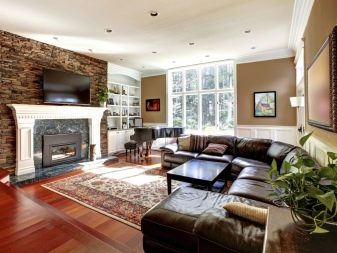
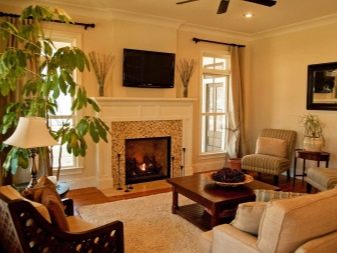
In a city apartment, an office (a desktop for working with papers and a computer), a creativity zone (if you are used to spending free time with a brush and an easel or at a sewing machine) and other functional areas depending on your interests may be added to these areas.
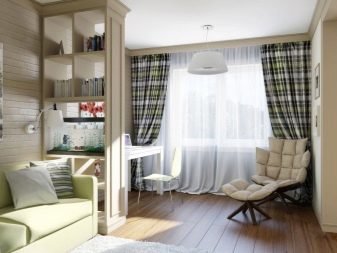
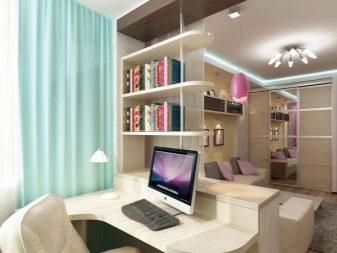
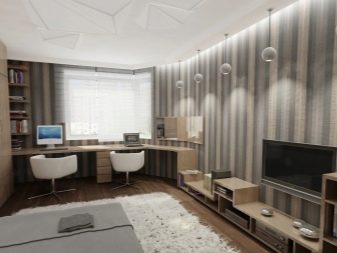

Choose a style
There can be no one clear recommendation, what style is more suitable for the living room. Some gravitate to the classics, others want to create an interior with a futuristic design, others love the calm and noble English style.
As you understand, it all depends on your preferences. It is only necessary to consider that each of the styles has its own characteristics. And if you have already decided to make a living room in a modern loft style, then try to reflect this in all the details.
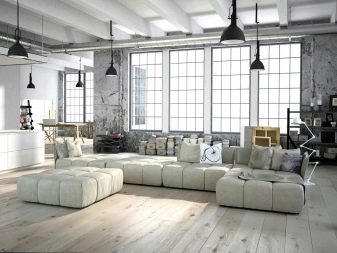
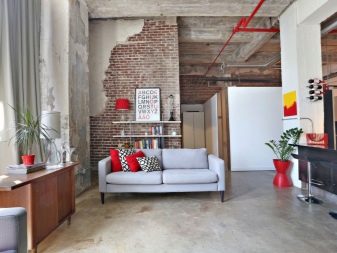
Standard set of furniture
Once you have determined which areas I will be in your living room and what style of interior you want to see, you need to decide on a minimal set of furniture. At first glance, there is nothing complicated. The traditional furniture for the hall is a sofa (and armchairs), a wall and, in some cases, a dining table with chairs.
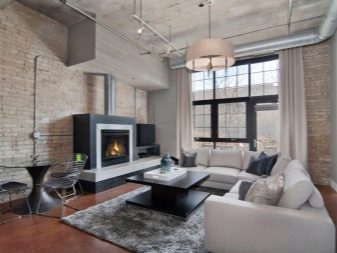
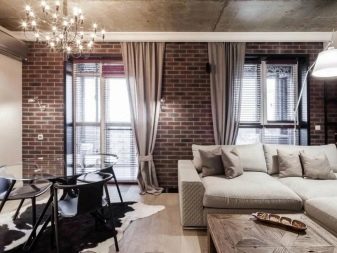
But current trends offer a ton of alternative solutions. A traditional large sofa can be replaced with a modular sofa. Its parts are easy to move from place, creating various landing scenarios for guests and households.
Bulky walls and cabinets give way to light racks that look very stylish, but take up less space.

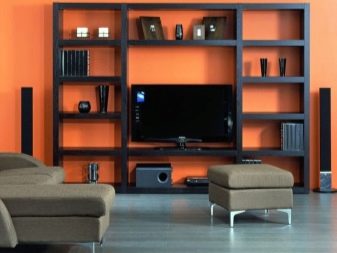
The rejection of cabinets as a place to store things, linen and other items is perceived negatively by many. If possible, simply equip a separate dressing room.. You will save the hall and other rooms from cabinets, freeing up a lot of space, while all things will be stored in one place, without attracting attention to yourself.
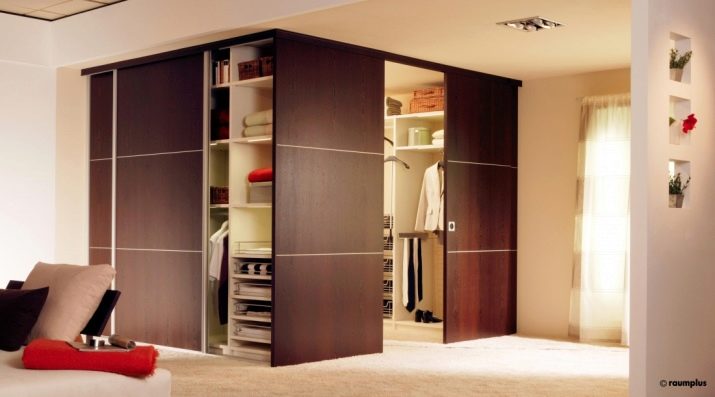
Wall decoration
Everything will depend on what style you have chosen as the main one. Thus, brickwork and concrete are typical for a loft, while Provence is impossible to imagine without cozy, rough walls. In any case, pay attention to the quality of finishing materials. Yes, repairs are expensive. But if you save on this stage, then very soon you will have to restore or completely remodel the walls.
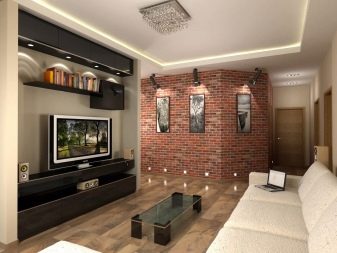
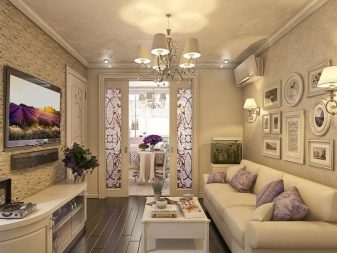
Ceiling and floor finishes
The ceiling is most often performed in neutral light colors. This is characteristic of almost all styles and directions. The fact is that the dark top will “crush”, reducing space. Therefore, it is light shades that are considered ideal for its decoration. As for materials, it can be plaster and stretch ceiling.

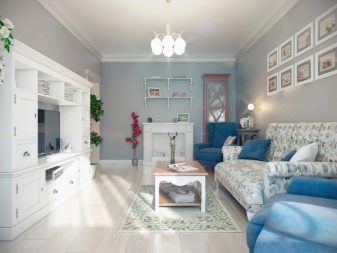
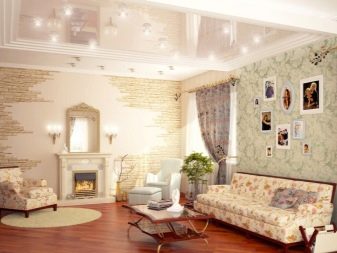

The floor in the living room is most often laid out with parquet or laminate.These are wear-resistant materials that are pleasant to walk on. The palette of colors and shades is large, and therefore everyone will be able to find a suitable option. The ceiling and floor do not need additional decorations. But if you want to emphasize their beauty, then skirting boards, moldings and stucco molding will come to your aid (if it is appropriate in the chosen style).
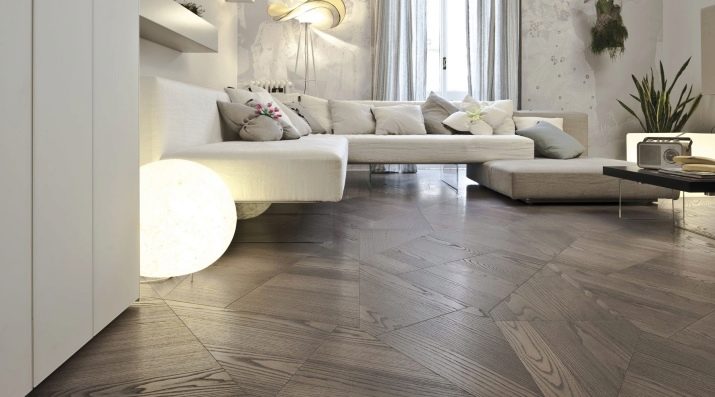

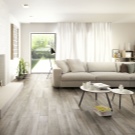
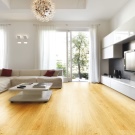
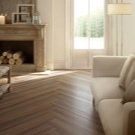
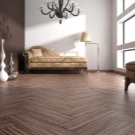
Attention to details
It is the details that give the interior a finished concise look. Do not underestimate their importance. A well-chosen vase or painting will only emphasize all its advantages and remind guests of the good taste of the owners.
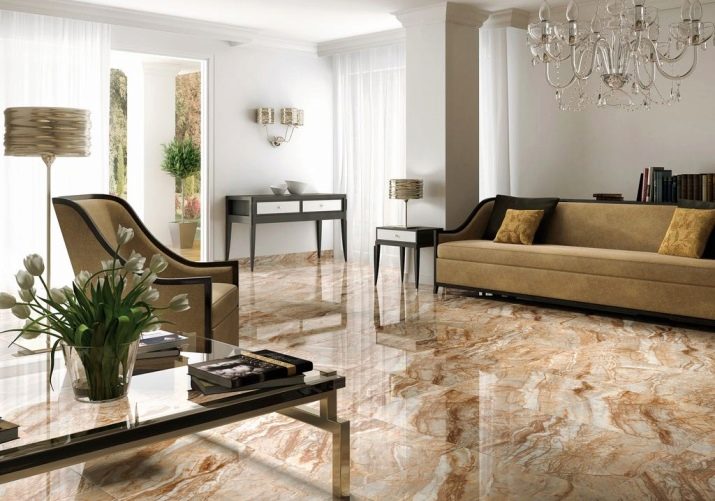
But here it is necessary to adhere to the golden mean. Too many decorative elements can "clog" the space. One or more art objects in the living room will be enough.
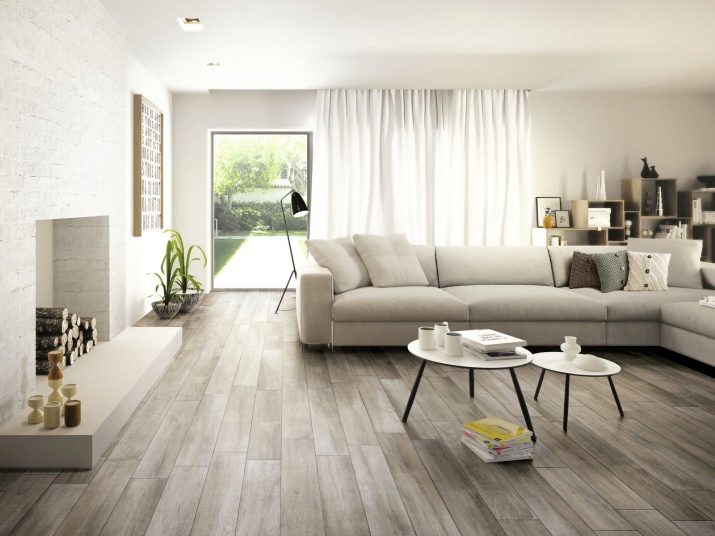
Pay attention to other details: accessories, table setting, textiles. In stylish authoring projects there is not a single random or unnecessary thing. All subjects are designed to support a given topic, and not argue with it or draw attention to yourself.
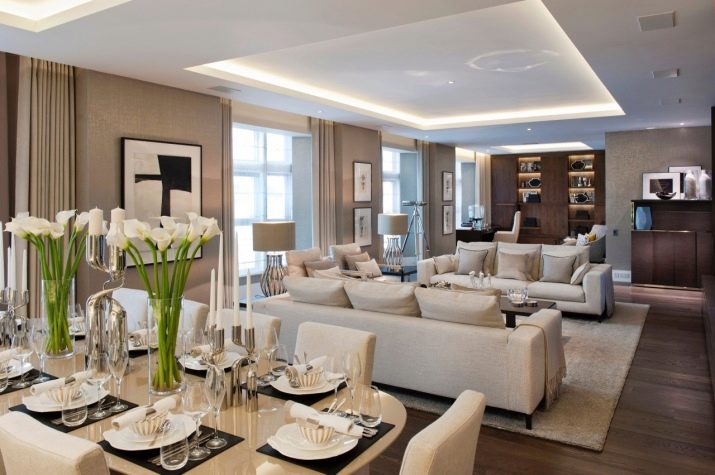
Suitable styles
It’s hard to say which style is best for the living room. This largely depends on the personal preferences of the owners of the apartment. We present to your attention the most popular and sought-after styles for decorating the living room.
Classic
It is generally accepted that older people are more attracted to it. But in most cases this is due to the incorrect interpretation of this style. Yes, he is restrained and even strict, but far from boring.
A true classic interior is expensive, since natural, expensive materials are used for repairs, decoration and furniture. If you replace them with cheaper analogues, then you will not get the desired effect, and the room will look like a parody of the classics, but not the classics in all its splendor and grandeur.
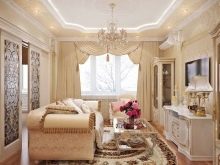
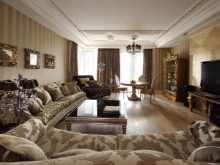
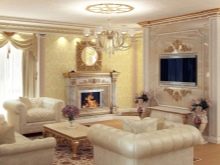
Loft
Very popular style today. Many do not like it because of the specific atmosphere. At first glance it seems that the repair in the room is not finished yet. Here you can see concrete or brick walls, a ceiling with concrete beams or ducts for ventilation and rough furniture.
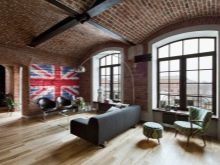
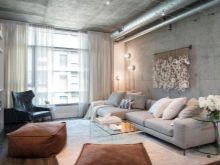
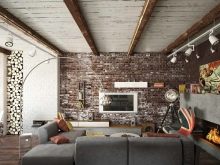
But upon closer examination, you understand that all this is the work of designers, and each element is interesting and unique. In this interior, the spirit of freedom is felt, the interior goes beyond the ordinary and destroys all stereotypes.
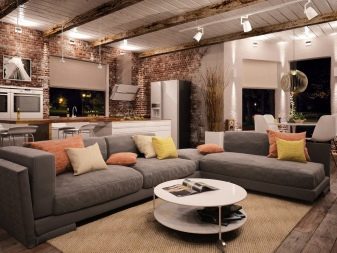

High tech
This style is characterized by the use of modern and even futuristic technologies. Not only the technical equipment should correspond to the latest trends, but the design itself should remind, if not the spacecraft’s cabin, then the movie room of the future. At the same time, there are practically no familiar decorative details in it.
There is a place only for real art objects of unusual shape and content.
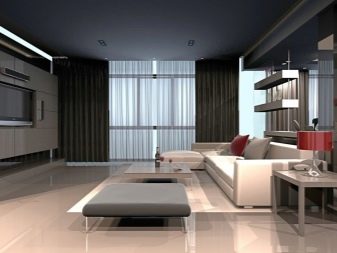

Modern
This style combines conciseness and functionality. It is suitable for both an ordinary city apartment and a country house. Much attention is paid to lighting. Each corner must be permeated with light. This expands the space and makes it a whole. Restrained wall decoration is compensated by the presence of niches, and the ceiling may have several tiers.
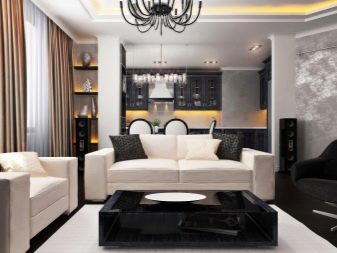
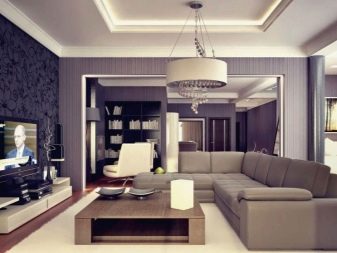
Art Deco
This style is suitable for lovers of everything luxurious and expensive - the golden frame of mirrors, facades and paintings, expensive textured textiles on furniture and windows, high-quality natural furniture made of precious wood. It’s easy to guess that all this luxury cannot be cheap. Any use of analogues (instead of natural materials) will be immediately noticeable. At the same time, the interior risks turning from a respectable to a miserable copy.
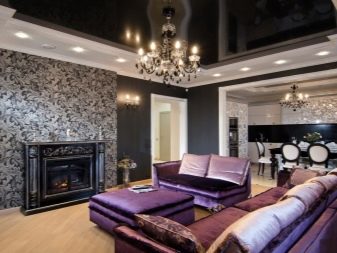
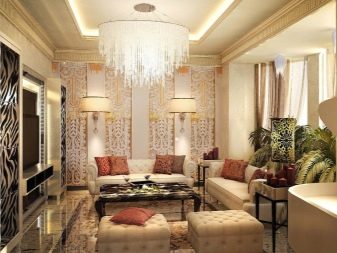
Provence
It is concise and understandable. It is dominated by pleasant smooth lines, harmonious decoration of walls and ceiling, and great attention to detail. The furniture has the correct shapes, and in the room you can trace a fairly clear geometry.In this case, the facades of the cabinets can be decorated with beautiful bends, and textile armrests and backs on furniture will be framed in ornate carvings.
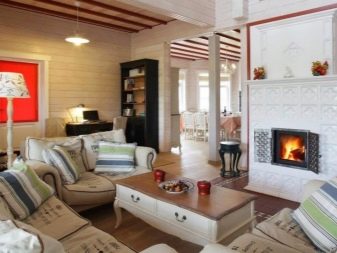
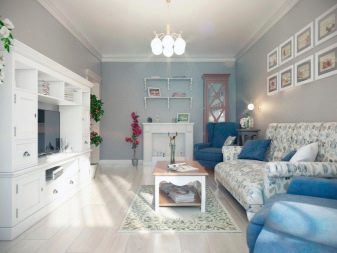
Minimalism
It seems that there is nothing easier than painting the walls white, putting one sofa and hanging a TV on the wall. After all, minimalism implies a minimum of decoration, furniture and the absence of decorative elements. But the designer’s task is to preserve the feeling of spaciousness and air by hiding or disguising all modules and objects so that the room seems spacious and unloaded. But to do this in practice is not so simple.
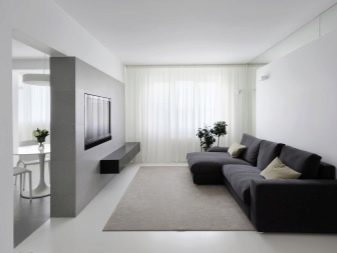
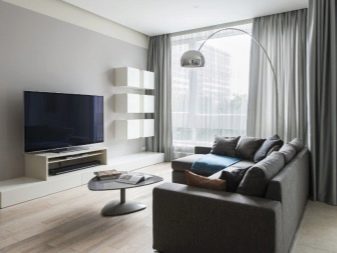
English
At the mention of this style, such epithets as stiffness, rigor and elegance come to mind. All this fully characterizes this direction of design. But this does not reduce the number of fans. Think of the Sherlock Holmes movies.
If you want to create a similar atmosphere in your apartment, then carefully study the nuances and details of the English style and get to work.
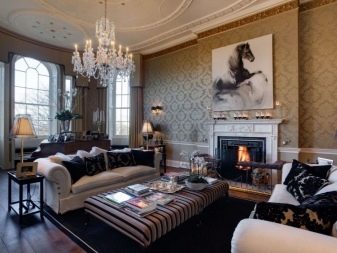
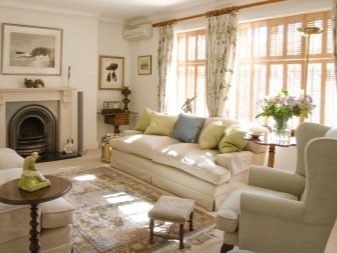
American
It is characterized by a special arrangement of furniture. The coffee table, sofa and armchairs are not placed along the walls, but form a composition in the center of the room. At the same time, wall decoration is most often done in a calm monochrome range. Stucco rather than wallpaper is preferred.
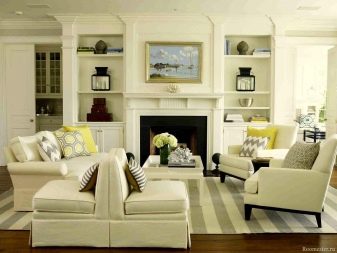

Ethnic
Interiors made in this style are always interesting and attract attention. They are characterized by exotic drawings and patterns (traditional for one or another people), the use of interesting decorative elements. The design will depend on what kind of exotic culture you are interested in.
If these are African motifs, then you cannot do without characteristic animal prints, if the interior is in oriental style, then you will need to pick up authentic textiles and accessories.
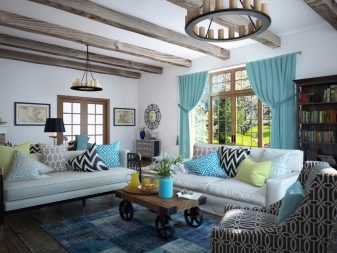
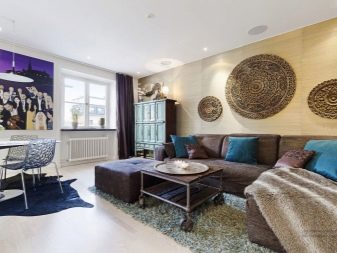
Mediterranean
Traditionally houses in the Mediterranean were built of clay. Inside was a simple wall and ceiling decoration. This style has retained these features to this day. Light plastered walls are preferred. At the same time, they should be perfectly even. The whole room is permeated with light and air. The calm monochrome interior is diluted with brightly colored textiles. Moreover, it must be natural.
Flax, cotton and satin are best for him.
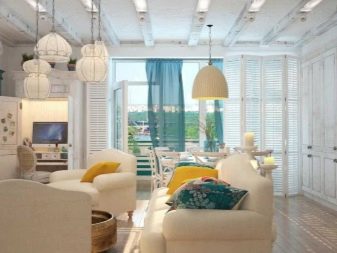
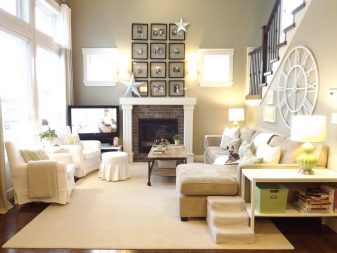
Country
The style of the American or western village is very fond of our compatriots. It is simple and straightforward. However, it can not be called boring. Every detail is permeated with warmth and comfort. A special atmosphere is created by handmade textiles - curtains with embroidery, delicate tablecloths and lace. For furniture, wood is used. Facades are often decorated with rattan or other wood weaves.
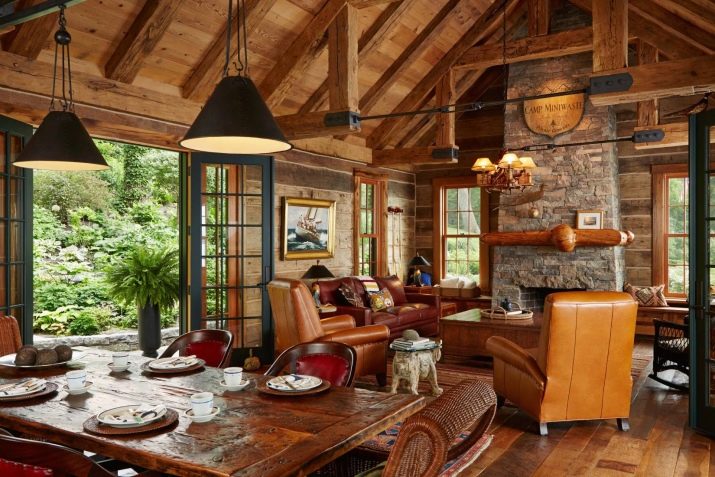
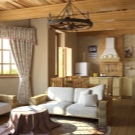
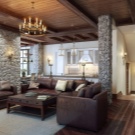
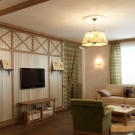
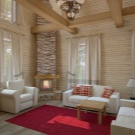
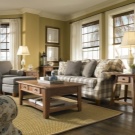
Finishing materials and their combination in the interior
A large role in the design of the living room is played by the selected materials for decoration. With their help, you can achieve the desired effect and create a unique and stylish project. When choosing them, it is necessary to give preference to quality options. Only in this way it will be possible to get a good result, and to ensure a long life of the room without repeated repairs.

Ceiling
Today, the leaders are two ways to decorate the ceiling. The first is the leveling of the surface with plaster, and the second is the installation of a stretch ceiling. Actually, the last option can hardly be called a finishing method.
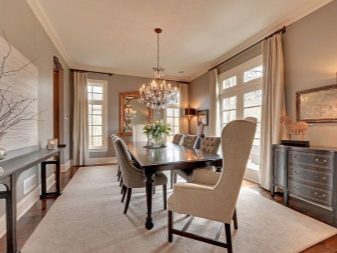
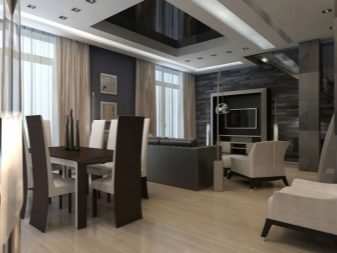
Each of them has its advantages and disadvantages. Stretch ceilings create a perfectly flat surface. In addition, you can choose their color and texture (glossy, matte, satin). Specialized firms will also offer you a design ceiling. The main disadvantage is the impossibility of its restoration after damage. Changing the color or texture of the canvas will also be impossible.
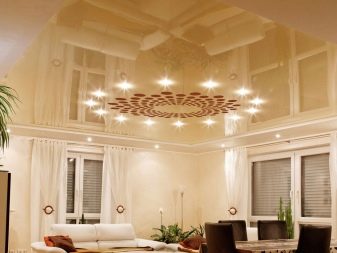
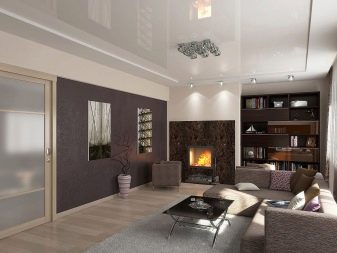
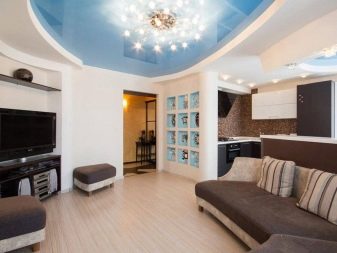
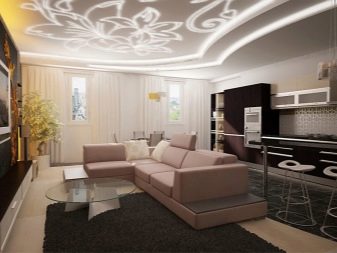
In the variant with plaster, it can be applied directly to concrete or it can be processed with pre-installed gypsum boards.In this case, the ceiling can be repainted and restored several times.

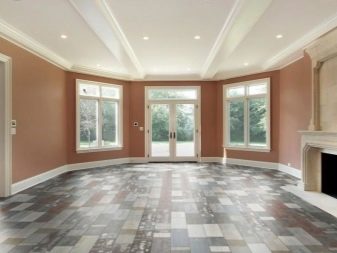
Floor
For finishing the floor, materials such as laminate, parquet board, linoleum, and carpet are used. The first two options are more expensive, but they will last quite a while. It is only worth considering that they do not like high humidity and can swell with constant contact with it.
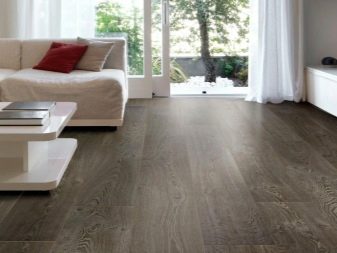
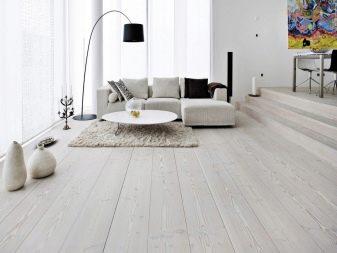
Today you can find linoleum of all kinds of colors. More expensive types have the texture of a real parquet board. It will be difficult to distinguish it from the original at first glance. At the same time, the price for it is much lower, and it is easier to lay such material on the floor.
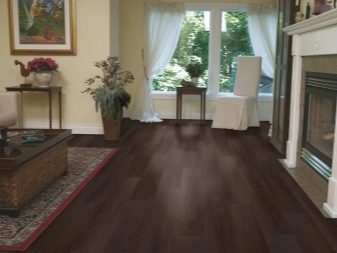
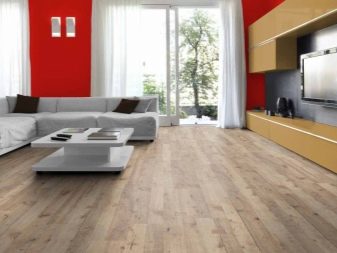
Walls
Here the choice of materials is much wider. Depending on the chosen design, you can use one of them or combine several types in one room.
- Plaster. Walls must first be perfectly aligned. After painting, it will be impossible to fix the defects, and on the painted surface they will be very noticeable.
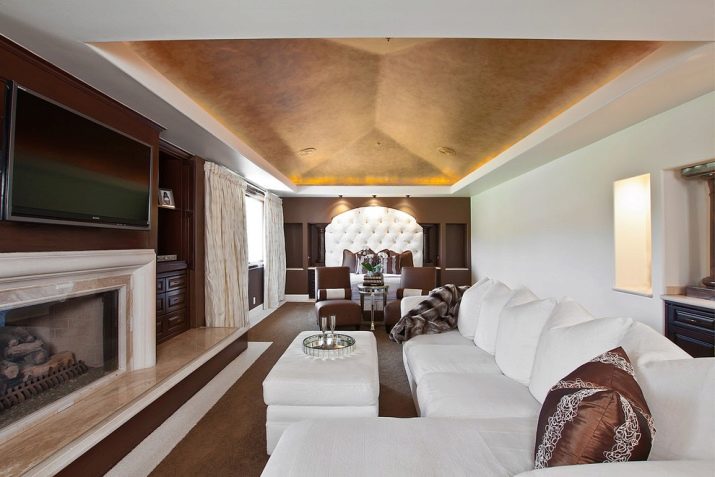
- Wallpaper. There is a large selection of these materials on the market. You can find both budget versions and expensive design options. The most popular today are non-woven and vinyl wallpapers. They have a long service life and can be washed. In addition, their texture can mimic natural materials.
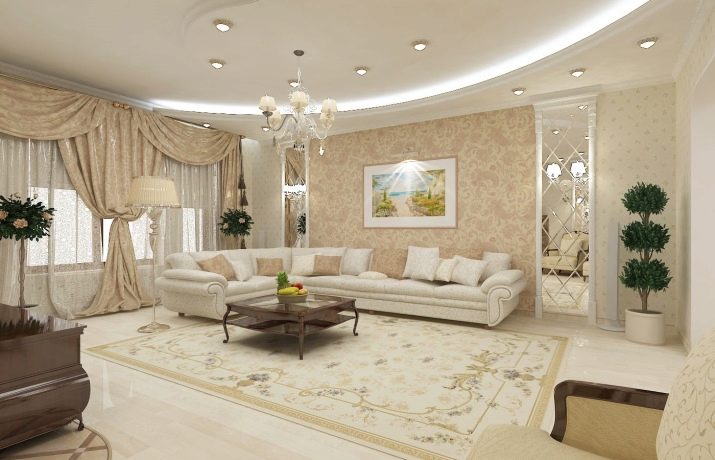
- Drywall. It creates a perfectly flat surface. With its help, you can equip niches or mask pipes and other communications. But this is not the finish. In any case, you will have to putty it, and then apply paint or glue the wallpaper.
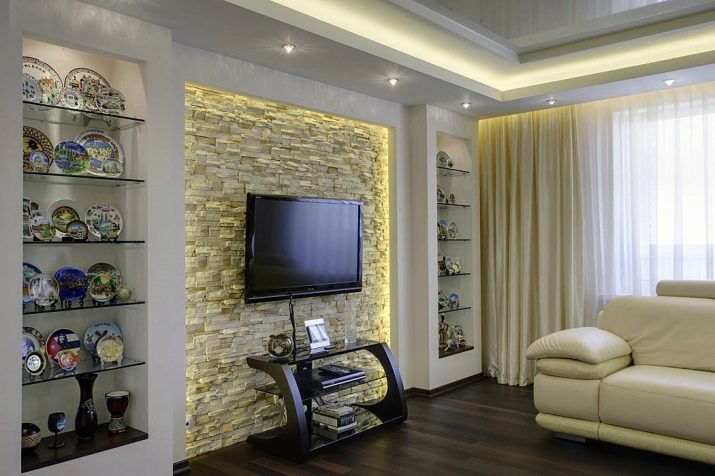
- Separately, you can highlight decorative plaster and liquid wallpaper. A huge plus of their use is that they are able to hide minor wall defects, while at the same time being a finish. If necessary, they can be painted in any color. This is a very nice bonus for families with small children.
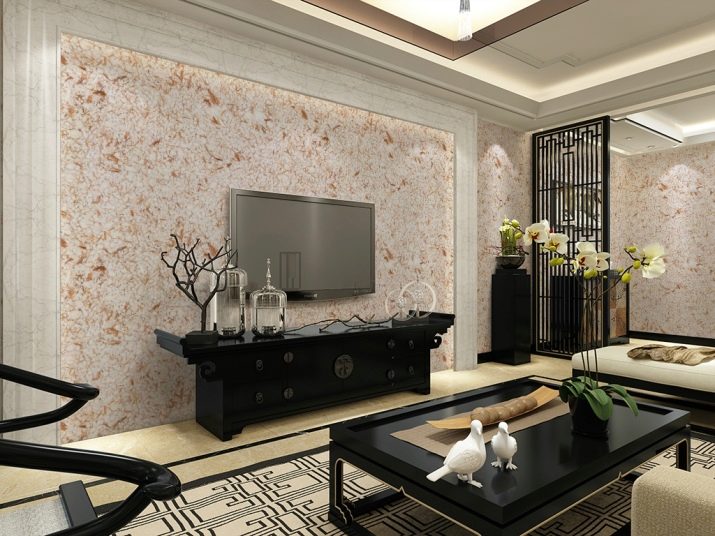
- Decorative stone and facing brick. These materials are panels (sizes can be any) that are mounted directly on the wall. They create the illusion of using natural materials.
At the same time, artificial brick or stone is much lighter than the original and their installation will not take much time.
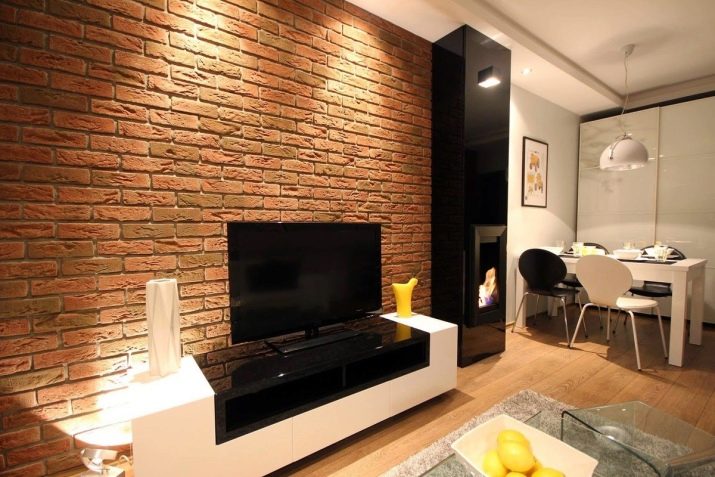
- 3D panels. This is new among the wall decoration methods in the living room. Modern technology that gives the walls not only color and texture, but also volume. Special lightweight panels can have various shapes and sizes. Some create the illusion of waves, while others adorn the space with an intricate geometric pattern.
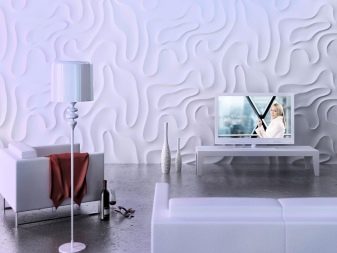
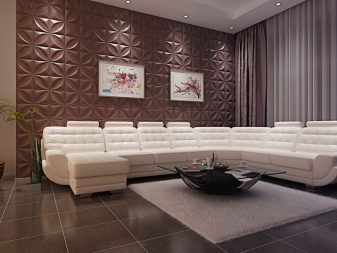
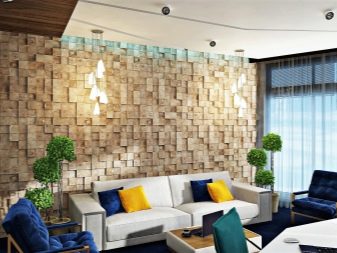

Selection and combination of colors
Light colors are suitable for narrow and small rooms, as they visually expand the space. Muted tones such as pistachio or olive are especially popular today.
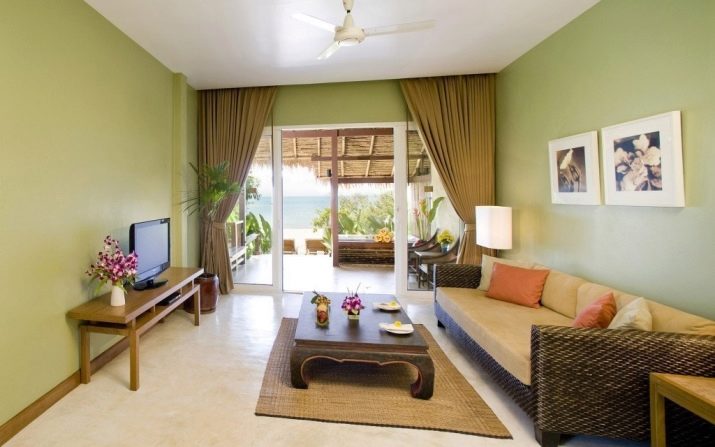
Among the bright colors, in addition to the usual violet, blue or red shades, designers are advised to try unusual colors for our interiors, such as mint, lemon, fuchsia or ultramarine.
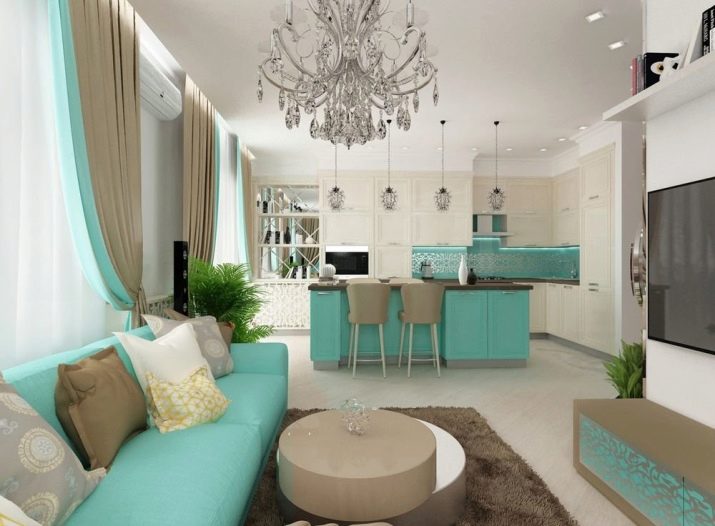
Among dark tones, preference is given to such classics as brown (or wenge), black, dark gray (graphite) and deep blue. But there should not be too many of them, so that the interior does not become gloomy and gloomy.
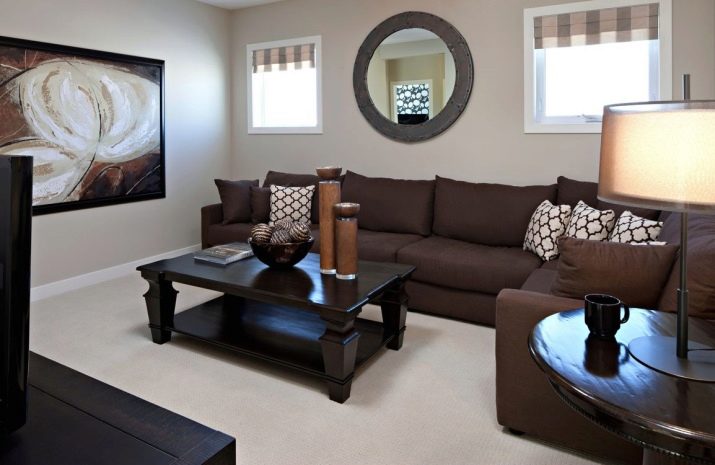
For lovers of unexpected combinations, you can choose two primary colors for the living room. In contrast, the entire interior will be built. If you find it difficult to find the right combination, use the design circle. On its opposite sides, shades that combine among themselves will be located. You can also mentally draw an equilateral triangle in a circle. In this case, its vertices will point to three colors.

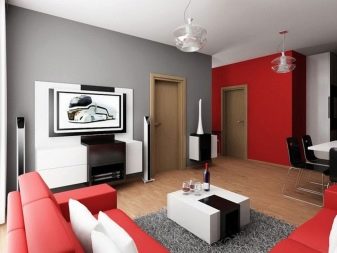
The classic combinations include such recognized favorites as white and black, beige and brown, gray and pink and some others. Choosing these combinations, you are guaranteed to get successful compositions.
Do not just forget about the golden rule of all designers: 60% of the primary color, 30% of the additional color and 10% of the accents.
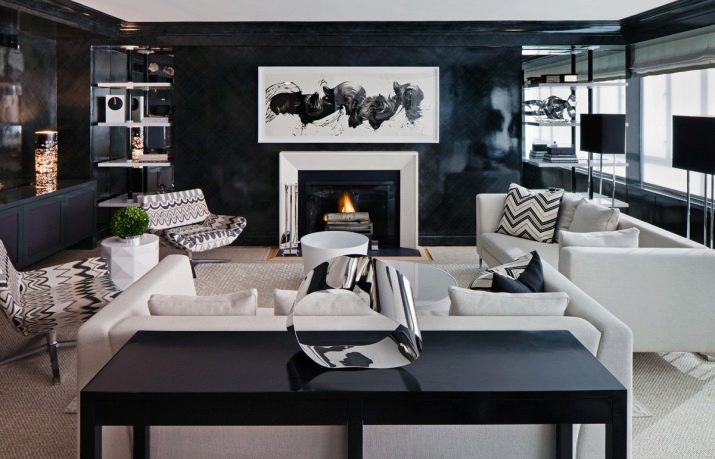
Furniture arrangement
It is not enough to make a good high-quality finish, to select furniture, it is necessary to arrange it correctly. The final result will depend on this. If you have all furniture cabinet, then it will be possible to experiment, rearranging objects in the right order. However, when ordering built-in furniture, such liberty will not be permissible.
An open type of arrangement is a scenario familiar to all of us, when upholstered furniture is located along one or two adjacent walls, and a rack (wall or slide) with a TV opposite. This provides a good overview and frees up space in the center.
This layout is ideal for small rooms.
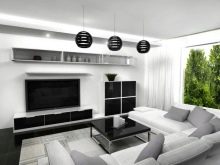
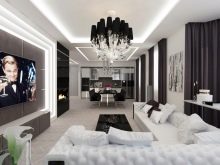
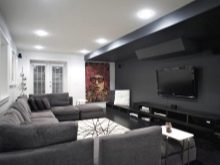
The closed type of arrangement is often used if it is necessary to combine a dining room and a recreation area with upholstered furniture in the living room. In this case, the TV and other equipment are located on the same wall (shelf, cabinet, etc.), and furniture is arranged around it, forming a closed area. The dining area can be located directly behind this composition.
There are completely unique living room projects - it is difficult to attribute them to any one style, and the arrangement of furniture is sometimes very unexpected. Such copyright projects deserve attention. They can become a source of inspiration, and it is there that you can get interesting ideas.
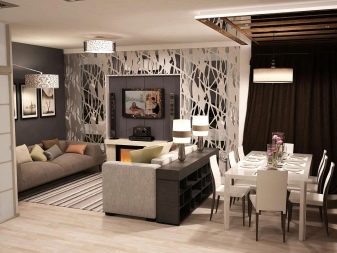

We have already said that the open type of arrangement is more suitable for small rooms, while the indoor one looks great in spacious living rooms. But when setting up, other factors must be taken into account. For example, in non-standard buildings, proportionality can be violated. In this case, the furniture, coupled with the design, can change its geometry, creating the correct shapes and highlighting the necessary zones.
If the family has small fidgets, then it is worth leaving them more free space. For the elderly, it is necessary to arrange furniture so that it is convenient for them to get the right things. It is also better to reduce the number of sharp corners.
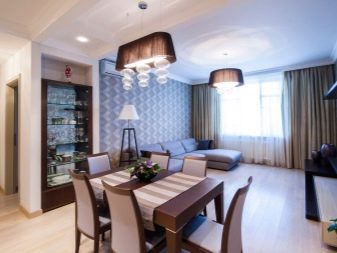
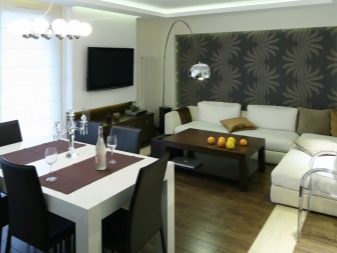
The arrangement of furniture in a certain way helps to organize space. With proper planning, functional areas will be clearly visible in your living room. It is difficult to call stylish the space where gymnastic rings hang in one corner, a table of an unknown purpose stands nearby, and a closet lonely huddles in the corner. When distributing the furniture in zones, a clear and concise picture is obtained.
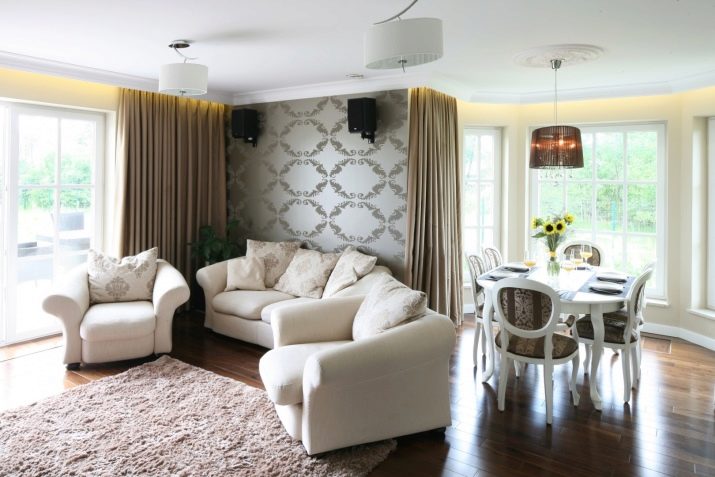
Lighting and other nuances
The issue of lighting in the old days received little attention. It was believed that it was enough to hang a ceiling chandelier to make it light.
Today, designers give him one of the main roles.
- Light zoning. With it, you can change the geometry of space, highlight the necessary zones and place accents. Therefore, even at the repair stage, several scenarios for lighting the living room should be provided.
- Daylight. Light through the windows should freely enter the room. If you do not like direct sunlight, then you can use curtains that will soften and scatter them. But do not put bulky cabinets near the windows or block them with other objects.
- Ceiling lamps. There may be several, but care must be taken at the repair stage, since this requires a wiring to each of them. It will need to be hidden behind sheets of drywall or a stretch ceiling. It can be either traditional chandeliers (but not more than one), or pendant or spotlights, spotlights.
- Neon lights. With its help, it is possible to emphasize certain zones favorably. If you install it under the ceiling, then it will seem higher. Highlighting individual objects (or shelves) will certainly attract attention in the evening.
- Floor lamps, sconces. They can be installed on your desktop or used as lighting for a soft zone where you can read your favorite book. They create a soft dim light.
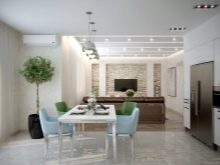
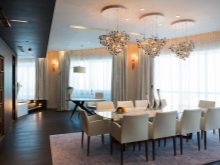
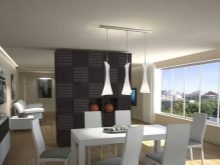
All elements of the decor should mix well with each other. Textiles are no exception. Upholstery, curtains, tablecloth and other elements should be made in the same style.
For some interiors, it is even preferable that it be the same material (or print).

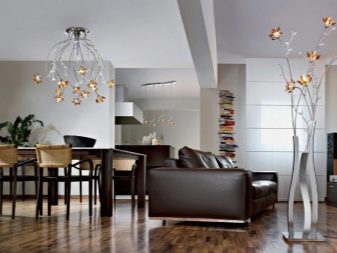
How to decorate?
There are many ways to decorate your interior. But you should not bring to the house everything that you liked in the store. Before buying, think carefully whether this thing will decorate and complement your interior, or is it simply beautiful in itself (but not within your interior). This will save you from unnecessary expenses and will allow you to maintain the given style.
Among the most popular decorative elements for the living room, the following can be distinguished.
- Paintings. Recently it has become fashionable to decorate walls with modular paintings. They represent several paintings, united by a common theme, or a single image can be divided into several paintings.
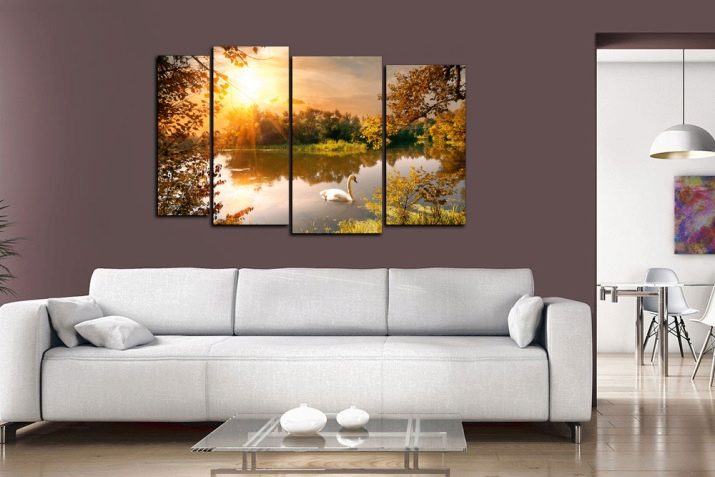
- Compositions from photographs. These may be photographs of your family, happy moments, or may be your favorite places and landscapes.
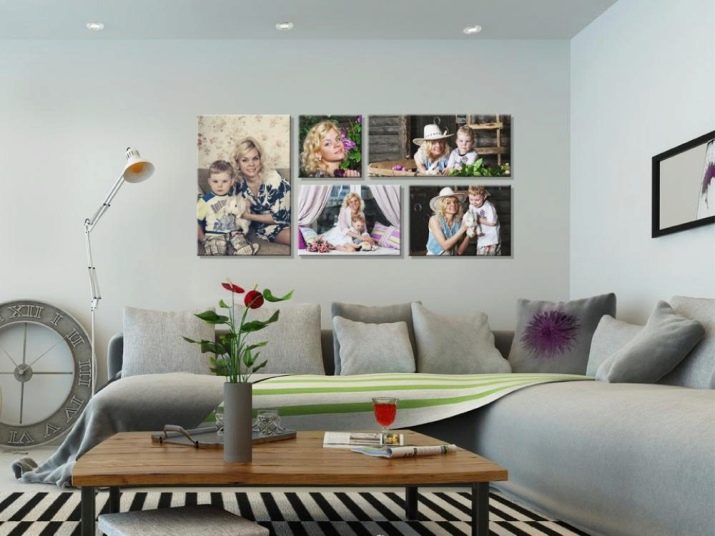
- Frescoes. Expensive pleasure, but the result is worth it. The most important thing is to choose a picture that is fully consistent with the style of the living room. Before deciding to make a mural, you need to understand that you can not change it as easily as wallpaper.

- Columns. They can be not only classic with stucco molding, but also very unusual: from metal, bamboo, brick, etc. It all depends on what style your living room will be made in.
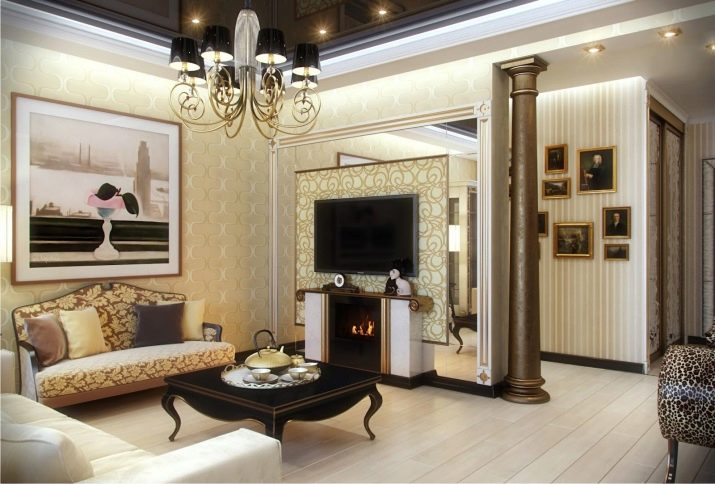
- Vases. For classic interiors, traditional large floor vases, which can be found in museums, are suitable. For styles such as Art Nouveau or high-tech, it is better to choose options of an unusual form, reminiscent of art objects of modern art.
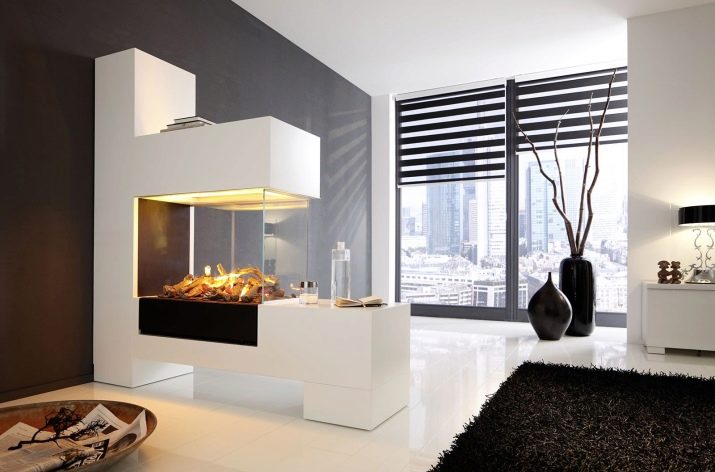
- Moldings. They give the interior a finished look, so you should not neglect them.
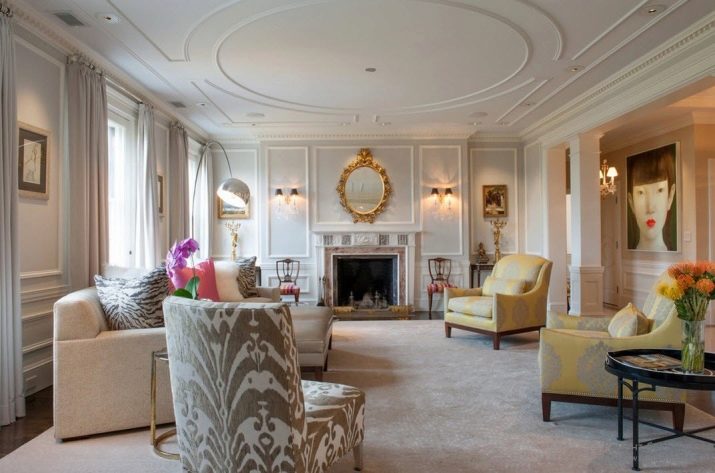
- Textile. Cozy pillows on the couch, a soft plaid on the armchair and carpets will certainly give the interior coziness and warmth. In addition, they can become color accents. If desired, they can be easily changed, and then the interior will sparkle in a new way.
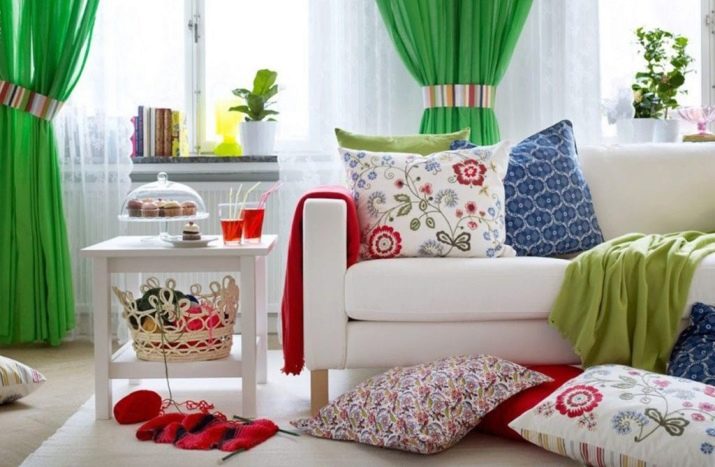
Beautiful ideas
The living room in a classic style looks respectable and expensive. The use of expensive natural materials emphasizes the status and good taste of its owners.
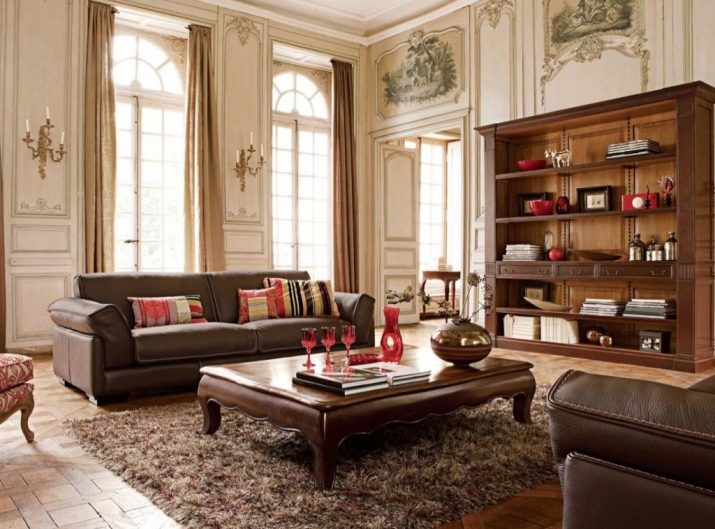
The interior of the high-tech style of the living room is similar to the decoration of films about the future. Modern technology and lighting only enhance this effect.
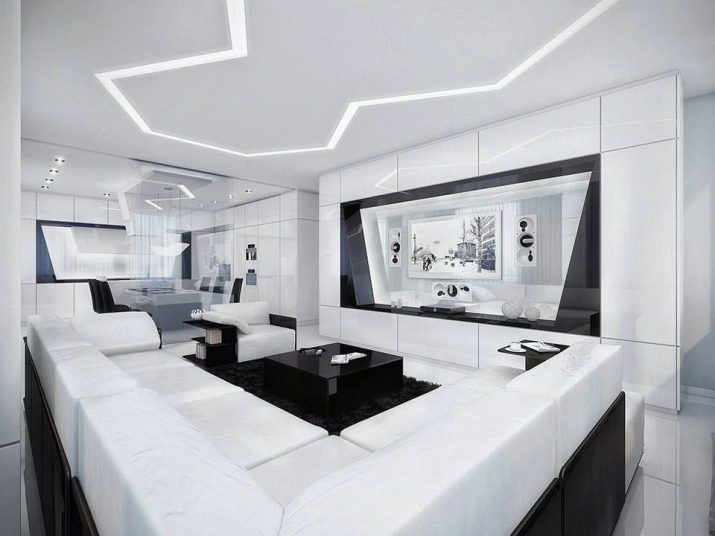
The tender and romantic living room in the Provence style will awaken the most tender feelings. It is nice to be here and arrange emotional family gatherings.

Find out how to prevent mistakes in the design of the living room in the video below.
